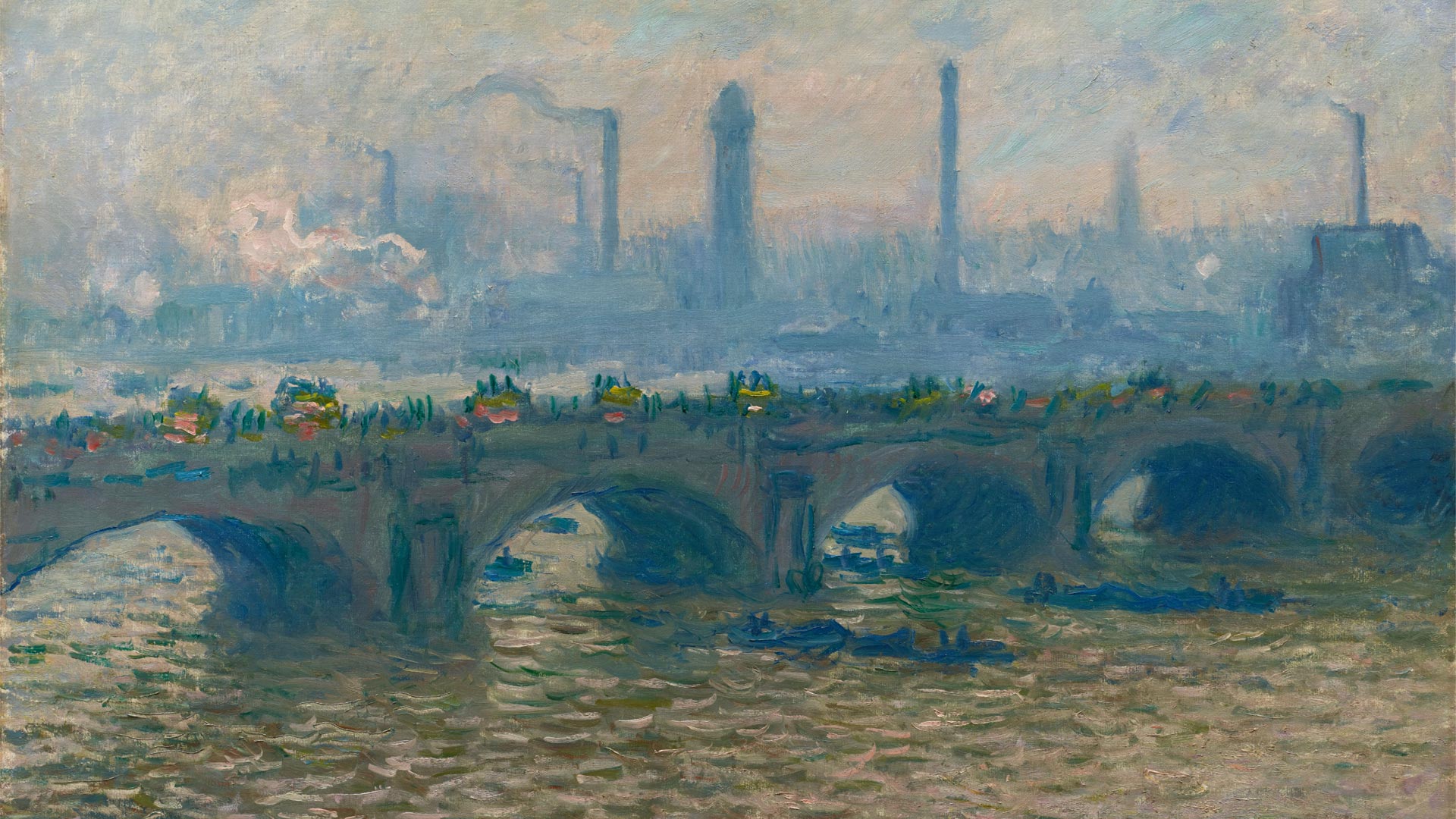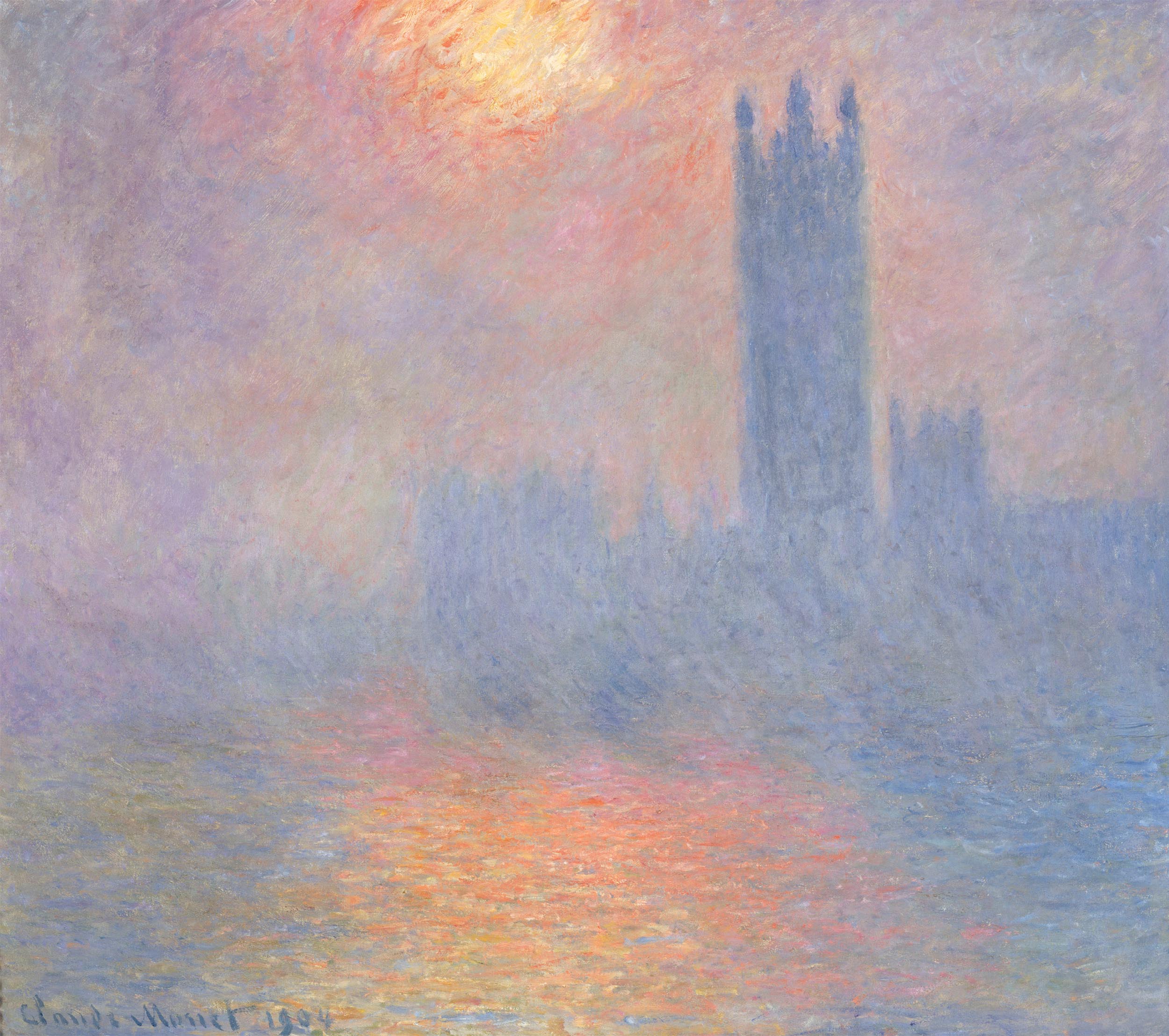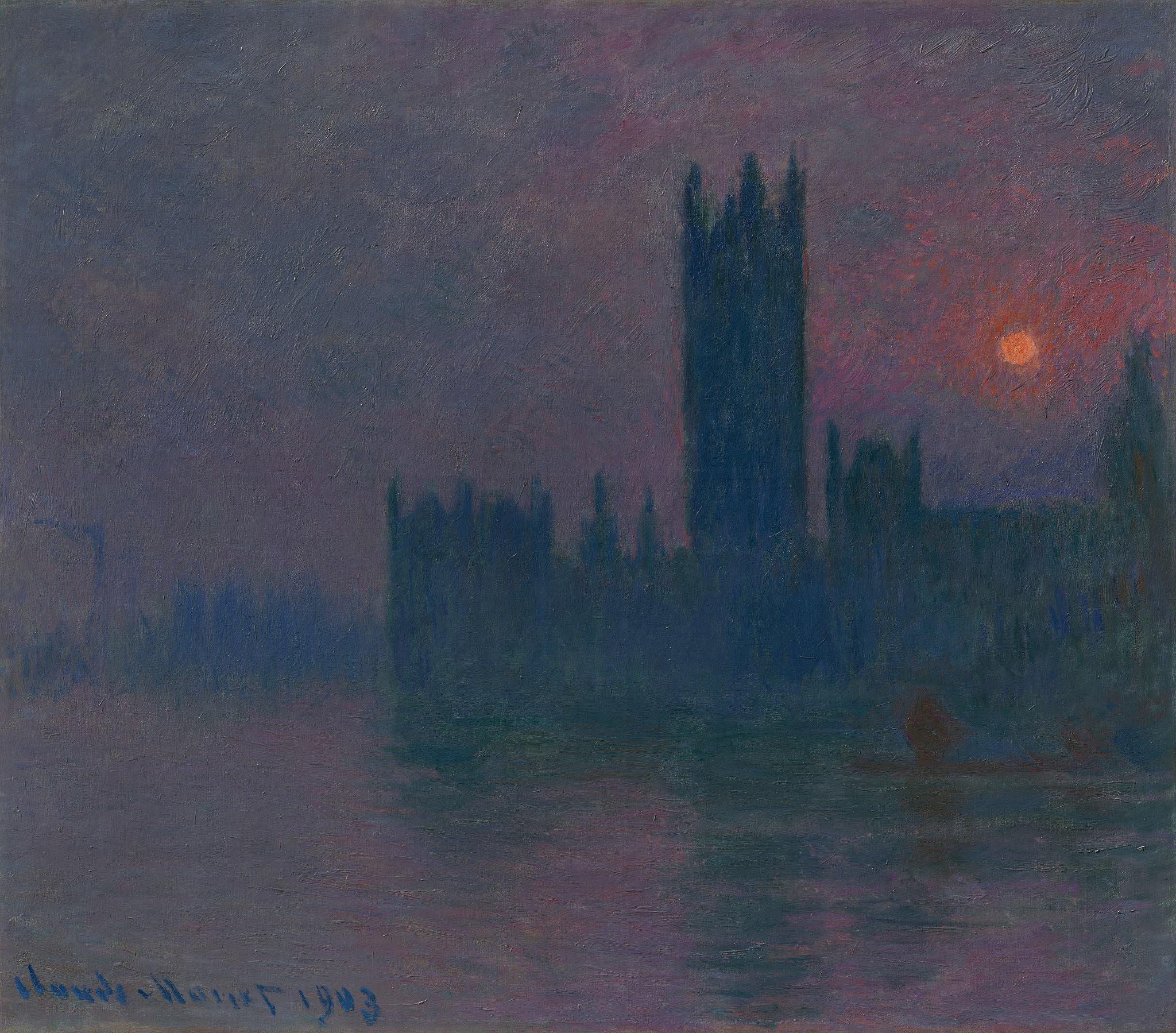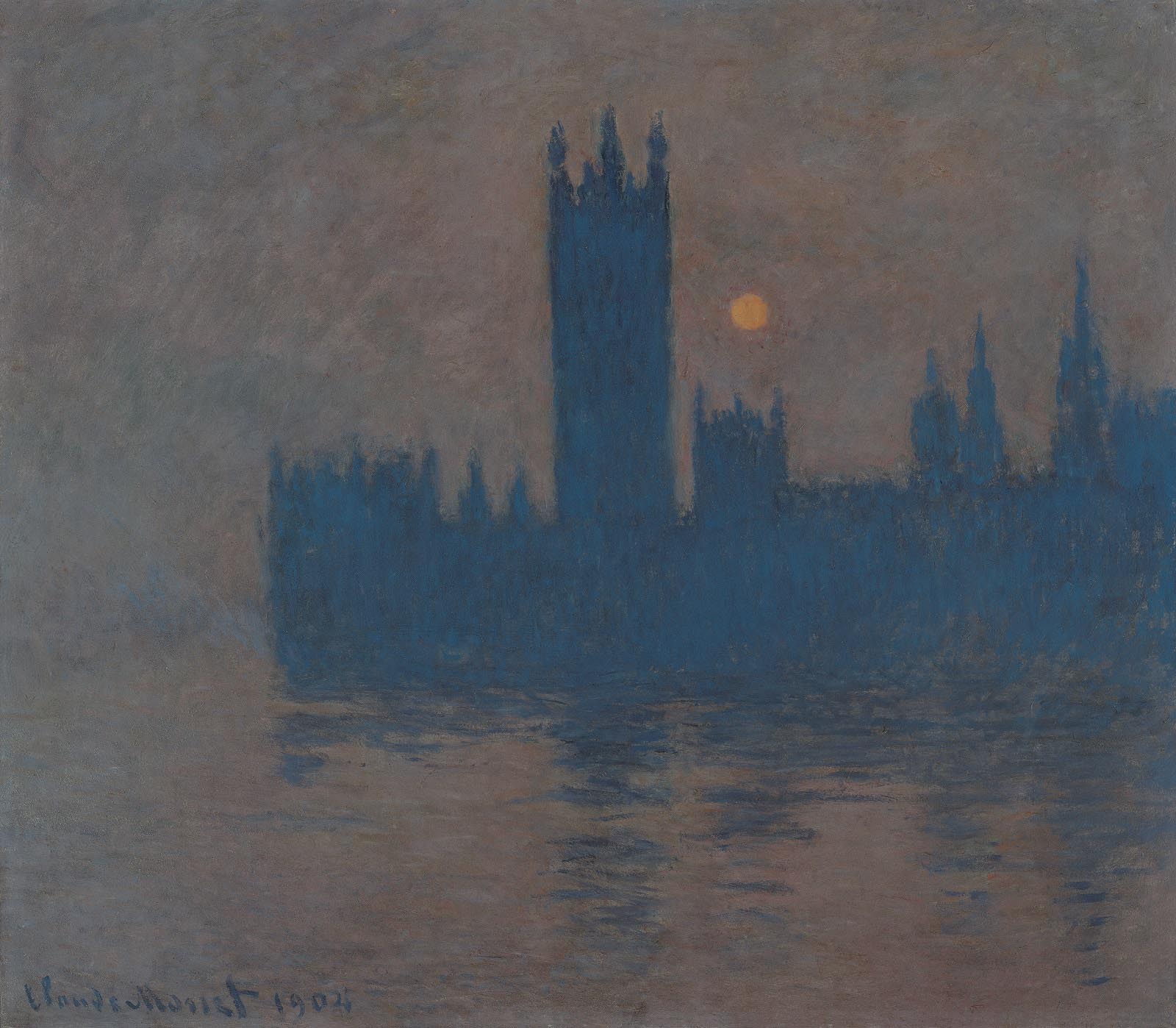Experience Claude Monet’s timeless vision of London like never before. The Courtauld Gallery’s landmark exhibition, “Monet and London: Views of the Thames,” brings together 21 extraordinary paintings that capture the city’s foggy beauty and iconic landmarks. Running from September 27, 2024, to January 19, 2025, this long-awaited reunion fulfills Monet’s own dream of displaying his masterpieces in London.
Who is Claude Monet?
Claude Monet (1840–1926) is widely regarded as one of the greatest painters in the history of art and a founding figure of the Impressionist movement. Born in Paris and raised in Le Havre, France, Monet demonstrated an early aptitude for art, starting as a caricaturist before transitioning to landscape painting.
His revolutionary approach to painting emphasized capturing the fleeting effects of light, color, and atmosphere. Monet rejected the rigid techniques of academic art, opting instead to paint outdoors (en plein air) to immerse himself in the natural world. This departure from traditional studio painting allowed him to focus on how sunlight and shadows changed over time, a hallmark of his work.
Impressionism
The term “Impressionism” itself was derived from Monet’s painting Impression, Sunrise (1872), which depicted a hazy sunrise over the port of Le Havre. This work, exhibited at the first Impressionist exhibition in 1874, marked a turning point in art history, challenging conventional aesthetics and inspiring a generation of artists to explore personal expression.
Monet’s career was marked by a restless curiosity and a commitment to documenting the natural environment. From his early depictions of the Normandy coastline to his later series paintings, such as the Water Lilies at his garden in Giverny, Monet’s works showcase his ability to convey emotion through light and movement. His Haystacks, Rouen Cathedral, and Poplars series represent some of the most ambitious studies of changing light and weather in art history.
Beyond Artistic Achievement
Beyond his artistic achievements, Monet endured significant personal struggles, including financial hardship and the loss of loved ones. Despite these challenges, he continued to innovate, producing some of his most iconic works late in life while nearly blind due to cataracts.
Monet’s London series, created during his stays at The Savoy Hotel between 1899 and 1901, captures his fascination with the city’s unique atmosphere. By portraying fog-laden views of the Thames and its iconic landmarks, Monet bridged his Impressionist style with the vibrancy of modern, industrialized urban life.
Today, Claude Monet is celebrated as a visionary who redefined how we see the world. His works continue to captivate audiences worldwide, not only for their technical brilliance but also for their profound emotional resonance.
Monet’s London Experience
During his stays at The Savoy Hotel between 1899 and 1901, Monet was captivated by London’s fog and its effect on the Thames. He painted iconic landmarks like Charing Cross Bridge and the Houses of Parliament, capturing the city’s unique atmosphere. These works were initially displayed in Paris in 1904, but Monet’s desire to exhibit them in London remained unfulfilled until now.

Claude Monet (1840-1926), Waterloo Bridge, Overcast, 1903, oil on canvas, Ordrupgaard, Denmark. Photo: Anders Sune Berg
The Exhibition: Monet and London
The Courtauld Gallery is hosting Monet and London: Views of the Thames from September 27, 2024, to January 19, 2025. This exhibition reunites 19 of Monet’s London paintings, offering a rare opportunity to experience his vision of the city. Highlights include:
1900
Waterloo Bridge, Misty Morning
A depiction of the bridge enveloped in mist, showcasing Monet’s mastery of light and atmosphere.
1901
Charing Cross Bridge, Thames Fog
A study of the bridge shrouded in fog, emphasizing Monet’s fascination with London’s weather.
1901
Houses of Parliament, Evening Glow
Captures the warm light of sunset and the atmospheric quality of London’s iconic landmark.
Why This Exhibition Matters
This exhibition is more than a display of stunning paintings; it’s a rare invitation to step into Monet’s world. His Thames series is a celebration of light, atmosphere, and the beauty of the ordinary, painted during a transformative time in London’s history. These works are a testament to art’s power to elevate the everyday and connect us to our shared humanity:
1. Monet’s Long-Awaited Vision Realized
For over a century, Monet’s Thames series was admired internationally but never exhibited together in London, the very city that inspired them. This exhibition fulfills Monet’s unfulfilled dream of showcasing these works in the environment that shaped their creation. The Courtauld Gallery’s proximity to The Savoy Hotel, where Monet painted many of these masterpieces, adds a layer of historical resonance.
2. A Deep Dive into the Artist’s Obsession with Light and Atmosphere
Monet’s fascination with the interplay of light, weather, and industrialization in London makes this series exceptional. He transformed the city’s fog—a phenomenon that others might see as mundane, into a dynamic subject imbued with mystery and depth. Through this exhibition, visitors gain insight into Monet’s obsessive dedication, as he returned to London multiple times to perfect his studies of the Thames.
3. A Rare Reunion of Masterpieces
The exhibition reunites 21 of Monet’s paintings, 18 of which were part of the original 1904 Paris exhibition where they debuted. This marks a rare opportunity for audiences to view the series almost as Monet intended—each painting contributing to an evolving narrative of light, season, and mood. Works like Waterloo Bridge, Misty Morning and Houses of Parliament, Evening Glow showcase the breadth of his exploration.
4. Highlighting the Intersection of Art and Urban Change
Monet’s paintings document London at a transformative time, capturing the city as a hub of modernity during the Industrial Revolution. The Thames, with its smoky haze and bustling activity, becomes both a literal and symbolic subject. The series invites reflection on how art can capture and elevate the beauty of urban life in a rapidly changing world.
5. A Celebration of Monet’s Technical Brilliance
The exhibition highlights Monet’s mastery of Impressionist techniques, particularly his ability to layer color and texture to evoke emotion. By focusing on the ephemeral qualities of light and weather, Monet achieves a sense of timelessness, making his work as relevant today as it was over a century ago.
A Testament to Art’s Enduring Relevance
In today’s fast-paced, digital world, Monet’s paintings remind us to pause and appreciate fleeting beauty. They challenge us to see the extraordinary in the ordinary—the shifting hues of sunlight, the shimmer of water, the weight of a foggy morning. For Londoners and international visitors alike, this exhibition offers not just a visual feast, but an opportunity to connect with the city’s historical and artistic soul through the eyes of one of the greatest painters in history.
Plan Your Visit
Exhibition Highlights
The upcoming exhibition will feature 21 of these masterpieces, including 18 from the original 1904 Paris unveiling. This assembly offers visitors a unique opportunity to experience the display Monet himself curated, reflecting his artistic vision and ambition. Notably, the gallery is located just 300 meters from The Savoy Hotel, where Monet painted many of these works.
Courtauld Institute of Art
Visitor Information
- Dates: September 27, 2024 – January 19, 2025
- Location: The Courtauld Gallery, Somerset House, Strand, London WC2R 0RN
- Opening Hours: 10:00 – 18:00 (last entry at 17:15)
- Tickets: Weekday tickets from £16; Weekend tickets from £18. Friends and Under-18s go free. Other concessions available.
Due to high demand, the gallery has announced extended opening hours on select dates. Additionally, “The Courtauld Lates: Monet and London” events will offer late-night access until 22:30 on the first and last Fridays of the exhibition, providing an evening of art, cocktails, and music amidst The Courtauld’s masterpieces.









